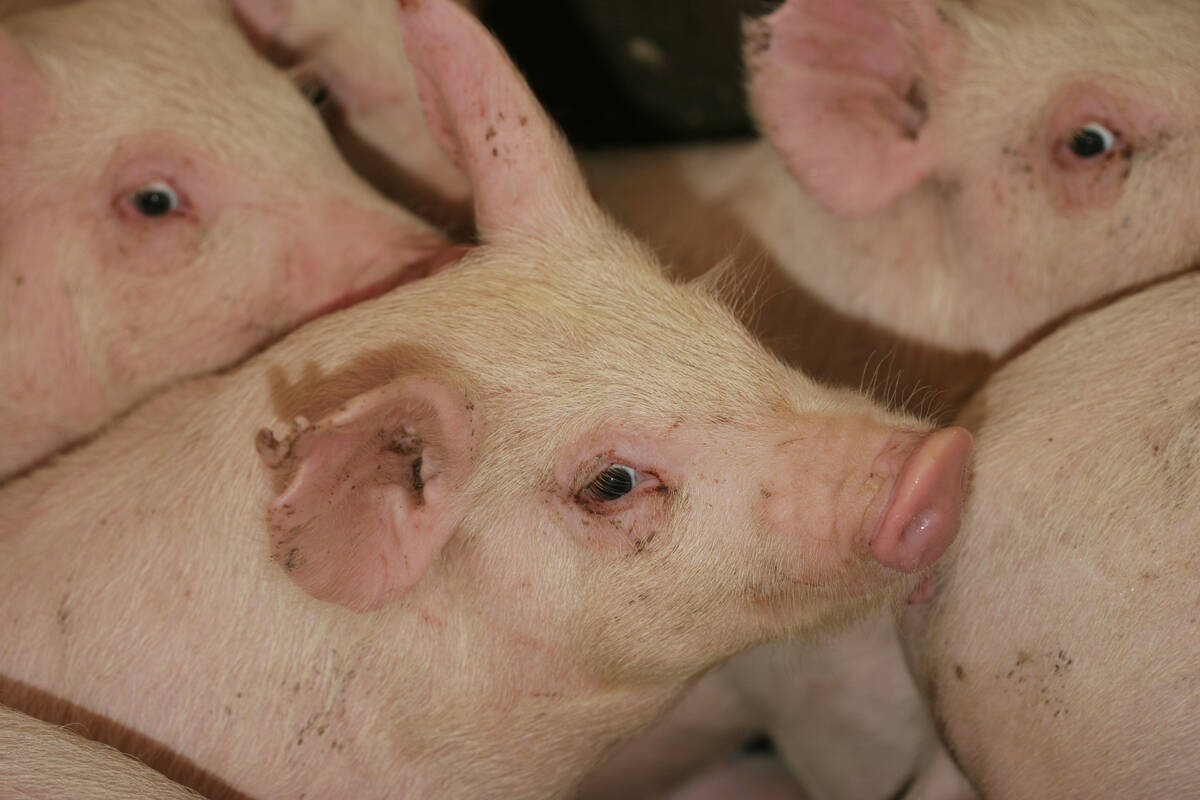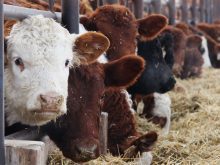Swath grazing calves in the field is half as costly as backgrounding them in a drylot, with no significant loss in rate of gain, a two-year study has found.
What’s more, staff at the Western Beef Development Centre near Lanigan, Sask., found that an in-field backgrounding experiment showed a cost of gain even lower than that of a nearby feedlot.
The calves were first weaned for five days alongside their mothers on pasture using Quiet Wean plastic nose clips, and then brought back in for a hard-weaning period where they were separated from the cows by a fence.
Read Also

The Western Producer Livestock Report – September 25, 2025
The U.S. national live price average for barrows and gilts was $81.21 Sept. 17. It was $78.37 Sept. 9. U.S. hogs averaged $106.71 on a carcass basis Sept. 17, up from $106.10 Sept. 9.
They were then backgrounded for 130 days on swaths of AC Ranger barley and golden German millet. A control group in a pen-feeding situation was given grain and chopped hay.
“We can do cost of gain cheaper than Pound-Maker, which is right next door, even with their huge cost advantages,” said Paul Jefferson, an agricultural researcher based in Humboldt, Sask.
In a presentation on low-cost wintering systems at the 2008 Manitoba Grazing School in Brandon last month, he said Pound-Maker buys in huge numbers and has a feedlot capacity of 28,000 head that is turned over twice a year.
“And they’ve got wet distillers grains coming out of their ethanol plant. Man, if we can beat their cost of gain, we might be doing something good here.”
In 2006, the study had to be cancelled because two inches of freezing rain had frozen the swaths, and the calves couldn’t get at the feed.
In 2007, the team led by WBDC research scientist Bart Lardner resumed the experiment in two phases. The study is being continued this year.
In the first phase, which began in the fall, an electric fence limited the calves’ access to the swaths, with a move scheduled every three days.
A range pellet was supplemented at a rate of two pounds per day, with an increase on very cold days.
In the second phase, which began in March, the calves were put on a barley silage and grain diet in a feedlot.
“While they are grazed differently in the backgrounding phase, everything was treated identically for the rest of the time in the feedlot and finishing phase,” said Jefferson.
Average daily gains in the 85-day first phase were highest on the barley swaths, with the drylot and millet a close second and third, respectively.
But later on, in the feedlot phase, with identical rations across all three groups for the remaining 100 days of the program, the millet-swath grazed calves showed a compensatory improvement and the highest average daily gains.
Cost per lb. of gain was lowest for the barley swath grazing at 65 cents, compared to drylot feeding at $1.17, with millet slightly higher than the barley at 87 cents.
Yardage cost savings account for much of the difference, he said.
“Last year, Pound-Maker told us they were costing their gain on commercial feedlot calves at about 90 cents a day,” Jefferson said.
“But we were able to do a little bit better than that with millet, while barley actually had the lowest cost of gain through the whole system.”
He added that the results are preliminary, and whether a swath-grazing system can beat a large feedlot on a consistent basis on cost per lb. of gain would depend on the price of grain and the feedlot’s yardage costs.
In 2007, the field feeding system had fewer sick animals, but this year, the researchers found they had to treat all three groups more or less equally.
“We’ve heard from people who background their calves in the field that the calves are much healthier. Last year we would have agreed with them, but this year we haven’t seen that advantage,” Jefferson said, adding that the result is even more surprising considering that fall weather was mild.














